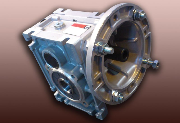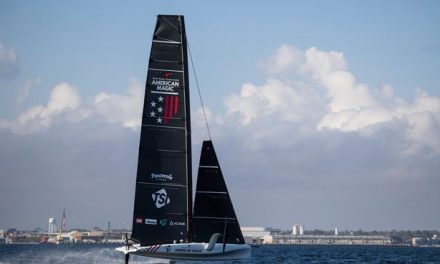 Tony Young, director of electrical and automation maintenance company, CP Automation, looks into the benefits of worm gearboxes and their suitable applications
Tony Young, director of electrical and automation maintenance company, CP Automation, looks into the benefits of worm gearboxes and their suitable applications
It would be hard to imagine how violin or guitar strings could be tuned without the use of worm gears, where each thumb screw is effectively a worm that turns a gear, the shaft from which in turn tightens a string. A complete turn of the thumb screw results in a much smaller turn of only a few degrees at the string shaft, and therefore much higher torque. More importantly, it provides precise tuning of the guitar string.
 If another gear were to be used on the same plane instead of a worm screw, it would be almost miniscule by comparison. Another advantage here is that the thumb screws can be spaced out at right angles to the strings themselves, where their close spacing would make it impossible to have gears placed side by side.
If another gear were to be used on the same plane instead of a worm screw, it would be almost miniscule by comparison. Another advantage here is that the thumb screws can be spaced out at right angles to the strings themselves, where their close spacing would make it impossible to have gears placed side by side.
This simple example introduces the application of worm gearboxes in an industrial context.
Gearbox features
A key feature of worm gearboxes are higher reduction ratios up to 300:1, whereas planetary gearboxes, for example, will typically have ratios up to 50:1. Due to the 90° shaft angle, an engineer can also fit the gearbox into a smaller space.
‘Worm gears are suitable for winches and hoists on heavy haul tractors, digger derricks and aerial work trucks to provide durability, reliability and safe operation’
Smaller dimensions mean better portability for mobile applications, for example a Hiab crane on the back of a lorry. Furthermore, the worm gear slewing mechanism is extremely reliable and thus keeps maintenance cost at a minimum. Worm gears are also suitable for winches and hoists on heavy haul tractors, digger derricks and aerial work trucks to provide durability, reliability and safe operation.
A rapid solution
CP Automation is now distributing Chiaravalli’s failsafe spring-applied motor gearboxes. These devices are suitable for heavy duty applications such as rolling mills, lifts, conveyors, printing presses and paper converting, as well as portable lifting equipment when coupled to a battery-operated DC motor.
In fact, worm gearboxes are applicable to various industries and are used in anything from dairies to car wash equipment.
The high torque offered by the devices has safety advantages as well, in applications such as lifts and hoists. The worm drives the gear but it is almost impossible for the gear to drive the worm, such as where the load is excessive. In other words there is no backward drive, which could be dangerous in conventional gearing arrangements.
Available from stock within a week (with optional 24-hour despatch service) the Chiaravalli CH and CHM worm gearboxes could represent a rapid solution for industries where downtime can prove expensive.
Of additional benefit, engineers can fit both AC and DC motors to a CH or CHM gearbox whereas most gearboxes are only suited to AC motors.
As a result, OEMs and machine builders can expand into new markets where portable equipment may be required. By fitting a 12V, 24V, 48V or 90V DC motor, they are ideal for portable battery-operated lifting devices up to five tonnes. Because worm gearing has such a high ratio, it will not back-drive. However, because the motor’s brake is applied by a spring, it is failsafe – once the equipment you are lifting is in position, the brake safely holds the motor.
Solutions
The CH gearbox has a motor mounting flange that can separate from the housing which incorporates the oil seal. This avoids the risk of damaging the oil seal in case of replacement of the input flange and allows the O-Ring to be eliminated.
The worm screw has a ZI involute profile, providing a gear ratio up to 1:300 as well as better performance at reduced temperature. The gearboxes and motors are painted with RAL 9022 aluminium colour epoxy powder to protect the parts from oxidation and the micro-blowholes that can come about from die casting pressure.
The CHM gearbox has a square shape, making it more versatile for mounting. The machining of the components, carried out using numeric control machines, guarantees maximum precision for restricted tolerances, resulting in a product that will remain reliable over time. The groups are constructed with aluminium casings from sizes 025 to 090, while the sizes 110 and 130 are made from cast iron.
The gears are supplied with at least one filling plug that is also used during testing to check for possible leaks. A connection flange allows two gearboxes to be combined in order to obtain high gearing ratios.
CP Automation
T: 01724 851515

